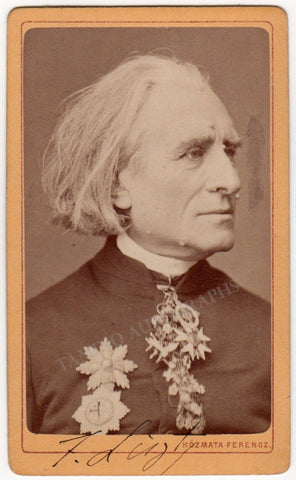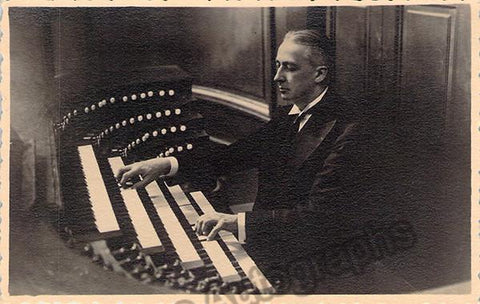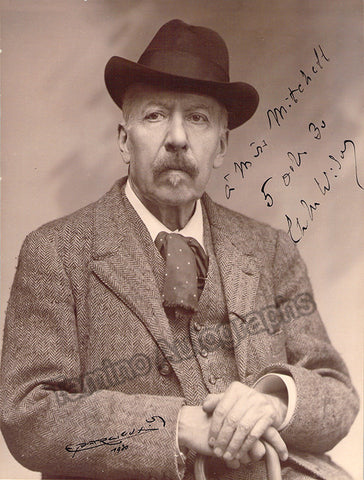19 Greatest Organ Composers in Classical Music May 05 2023
Organ music is one of the most beautiful and moving forms of classical music. It's also one of the more difficult to write, as the organ is an incredibly versatile instrument that can be used to create a wide range of moods and styles.
But who are the greatest composers of organ music? We've put together our list of the 19 greatest classical composers of organ music—in no particular order—and we hope you enjoy it.
1. Johann B.J.M. Reger (1873-1916)
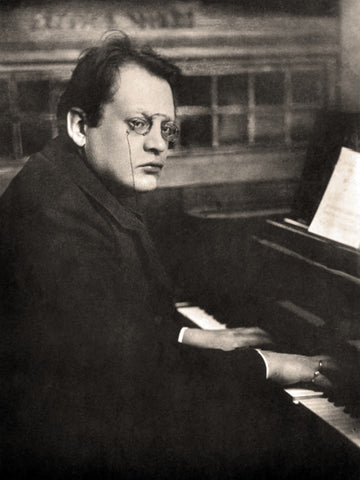
Johann B.J.M. Reger was a German composer and organist who lived from 1873 to 1926. He is known for hisceds work in the classical music genre, specifically organ music—for which he composed over 200 pieces.
His most famous work is Toccata in D minor, which has been performed by many popular artists including organist Piet Kee and jazz pianist George Shearing.
In addition to his work as an organist, Reger also wrote orchestral pieces, songs, and choral works that have been played throughout Europe since their creation in the early 20th century.
His compositions are often characterized by a great deal of complexity within very simple melodies that are easy to follow but still maintain interest with unexpected twists in rhythmic patterns or harmonies.
2. Josef Gabriel Rheinberger (1839-1901)

Josef Gabriel Rheinberger was a famous organist and composer who lived from 1839 to 1901. He is most famous for his work on the organ, which he used to create one of the most important collections of organ music ever written, "The Theme and Variations."
[IMAGE] Photograph of Joseph Gabriel Rheinberger by photographer Atelier Müller-Hilsdorf (Munich)
The Theme and Variations are surely one of the most extraordinary and effective pieces ever written for a string quartet. This work demonstrates how Reinberger effortlessly moves from one variation to another without any sense that he has reached its conclusion; rather, it seems like there is no end to this beautiful piece of music. It is a true masterpiece that deserves to be heard again by many people today
Reinberger's work has been very influential in modern classical music—particularly because of its diversity. Because he wrote so many different types of music there are many ways to use it as inspiration for new compositions today.
3. Cesar Frank (1817-1870)
Cesar Frank was a Belgian composer and organist who is best known for his organ music. He was born in Liege in 1817 and he first began playing the organ at the age of nine.
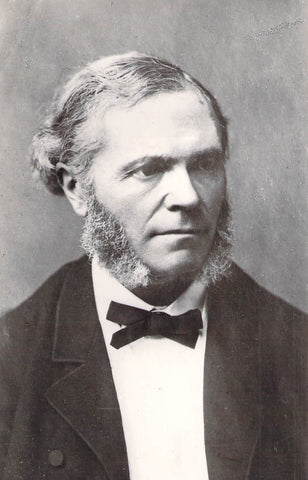
In 1834, he gave his first public performances, and by 1858 he had become an organist at the Basilica of St. Clotilde in Paris, a position he retained until he died in 1870.
He became professor at the Paris Conservatoire in 1872; he took French nationality, a requirement of the appointment. After acquiring the professorship, Franck wrote several pieces that have entered the standard classical repertoire,
His most famous works include several important symphonies including String Quartet in D Major (1889), Symphony in D Minor (1888), Sonata in A Major for Violin and Piano (1886), and Variations Symphoniques (1885).
Frank was born into the Romantic Period era, which was characterized by romanticism, nationalism, and a return to classical forms of art such as music. His work reflects this era because it is passionate and emotional while retaining classical formality—for example, notice how many different instruments are used throughout each piece.
4. Girolamo Frescobaldi (1583-1643)
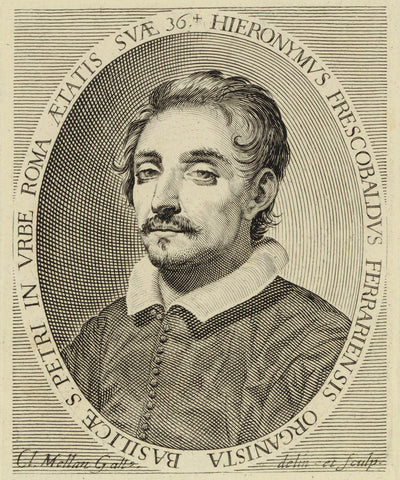
Girolamo Frescobaldi was an Italian composer, organist, and harpsichordist. In addition to his daring use of chromaticism, he is most famous for his development of the chitarrone/archlute.
He was Luzzasco Luzzaschi's student in Ferrara as a child and went on to be heavily influenced by many composers, including Claudio Merulo and Ascanio Mayone. He was appointed organist of St Peter's Basilica from 21 July 1608 until his death: an impressive 43-year tenure.
His printed collections contain some of the most influential music of the 17th century. They were considered controversial at the time because they were so different from what had been written before; many people thought they were too hard to understand or play well enough to be worth learning from them. But many other composers who came after Frescobaldi—including Johann Henry Purcell, Jakob Froberger, and Johann Sebastian Bach—were greatly influenced by him and learned much from his work.
5. Felix Alexandre Guilmant (1837-1911)
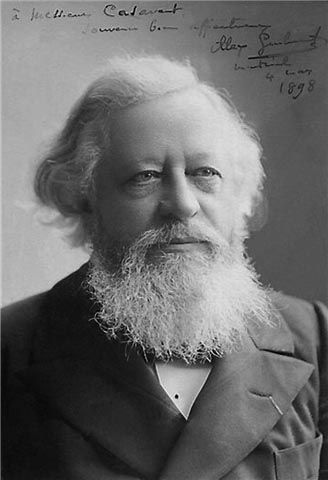
Felix Alexandre Guilmant was a French composer and organist. He was the organist of La Trinité from 1871 until 1901. After studying under his father and then Jacques-Nicolas Lemmens, he became the organist at his hometown's church—and a teacher as well.
In 1872 he was appointed by the church of La Trinité in Paris as an organist, a position that he held for 25 years.
Guilmant was a brilliant organist, as well as an accomplished composer. He is best known for his 18 collections of Pièces dans différents styles (pieces in differing styles), 60 Soixante interludes dans la tonalité grégorienne (liturgical organ music) and 12 books of l'Organiste liturgique.
In addition to his orchestral and chamber music, Albéric wrote vocal pieces—a sinfonia cantata (Ariane), a lyric scene (Bathsheba)—and opera.
6. George Frederic Handel (1685-1759)
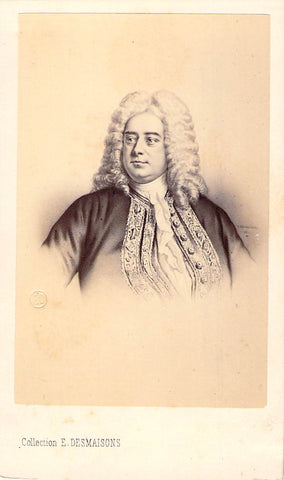
Handel was a German-born British baroque composer, known for his operas and oratorios. The composer received his training in Halle and worked as a musician in Hamburg before settling in London, where he became a naturalized citizen. The composer received his training in Halle and worked as a musician in Hamburg before settling in London, where he became a naturalized citizen.
The composer was strongly influenced by the middle-German choral tradition, as well as Italian Baroque composers. Handel's music exemplifies the "high baroque" style, which brought Italian opera to its highest development. It created a new genre of English organ concertos and brought about a change in church music as well
Handel is recognized as one of the greatest composers of his age by critics, historians, and musicians alike.
7. Adolf Friedrich Hesse (1809-1863)

One composer who made his mark on this genre is Adolf Friedrich Hesse (1809-1863).
Adolf Friedrich Hesse was a German organist, composer, and music theorist. He was born in Breslau (now Wrocław) in 1809 and died there in 1863.
His first music teachers were Friedrich Wilhelm Berner and Ernst Köhler, both of whom he studied with in his hometown. Between 1975 and 2013 he published 13 editions in 4 languages; WorldCat libraries hold 68 copies of these books worldwide.
He is best known for his works for organ including Fantasie in C minor (1831), Opus 22; Orgel-Vorspiele (1831), Opus 33; 7 Orgelstücke (1834), Opus 60, and many more.
8. Sigfrid Karg-Elert (1877-1933)
Sigfrid Karg-Elert was one of the most famous composers in the early twentieth century, best known for his compositions for pipe organ and reed organ.
In 1882, his family finally settled in Leipzig. There Siegfried received his first musical training and private piano instruction. On a visit to Leipzig, he presented his early compositions to the composer Emil von Reznicek, who offered him a 3 year scholarship at the conservatory.
Studying under such teachers as Alfred Reisenauer, Salomon Jadassohn, Carl Reinecke, and Robert Teichmüller enabled the young man to attain a high degree of musical proficiency.

He worked as a piano teacher in Magdeburg from August 1901 to September 1902, during which time he changed his name: adding a variant of his mother's maiden name to his surname while adopting the Swedish spelling of "Sigfrid."
In the 1920s and 1930s, Germany's cultural climate was hostile to Karg-Elert (and other artists), who was international in outlook; but he was admired outside of Germany—especially by the Organ Music Society of London. The Society organized a twelve-day festival in his honour in 1929 which he attended.
In 1932, he embarked on a concert tour of the United States. This trip was ill-advised from a musical standpoint—as his health had declined drastically due to smoking and heart disease (Conley 2001)—causing such issues as neuralgia and increased headaches. This deteriorating health would later lead to his death in 1933 at the age of 55.
Some of his greatest pieces include 20 Chorale Preludes and Postludes for organ, Jugend for flute, clarinet, piano & horn, and Cathedral Windows for organ.
9. Jean Francois H. Langlais (1907-1991)

Jean Francois H. Langlais was a blind French organist, teacher, and composer who was admired by many people. He was born in 1907 in Paris, where he first studied at the Institution des Jeunes Aveugles (1917–30), with Andre Marchai as his principal mentor for organ; after studying with Dupré at the Conservatoire (where he won first prize in organ, 1930), Gallon (counterpoint; 2nd prize in 1935) and Dukas (composition, 1936), he also studied improvisation with Tourne-mire.
From 1930 to 1968, he was a professor of music at the Institution des Jeunes Aveugles; and from 1961 to 1976 he taught organ and composition at the Schola Cantorum. He served as an organist at Notre Dame de la Croix and St.-Pierre de Montrouge before taking a post at Ste.-Clotilde in 1945. Throughout his career, he toured Europe many times and in 1952 made his first visit to America.
In 1988, at London's Royal Festival Hall, he gave his farewell recital. In his compositions, Langlais combined the polymodal harmonies of Gregorian chants with hymn tunes and Breton folk melodies.
Some of his greatest works include TYheme, Variations, and Finale, Deuxième Concerto for Organ and Orch, Pièce for Trumpet and Organ, and many more.
10. Alfred-Louis Lefebvre-Wely (1817-1870)
Alfred-Louis Lefebvre-Wely (1817–1870) was born in Paris to an organist father. He was a pupil of his father, Isaac-François-Antoine Lefebvre.
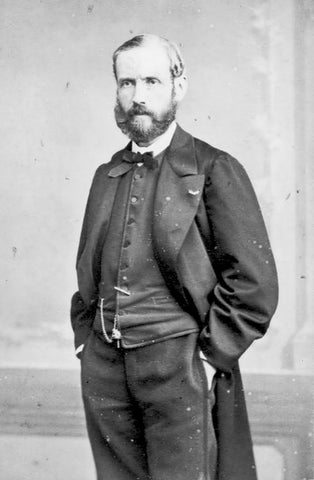
Lefébvre-Wély suffered a stroke, paralyzing his left side. For the next five years, his son deputized for him.
At the age of fourteen, Alfred succeeded his father Antoine as the official organist at Saint-Roch. While holding this post he also studied with François Benoist at the Paris Conservatoire, where in 1835 he won first prize for organ. He studied composition with Berton and Halévy in the early 1830s before working as an organist at Notre-Dame-de-Lorette—where Cavaillé-Coll had built a new instrument—for several years.
Praised by many for his technical skill, Lefébure-Wely was advised to play in a more serious style but continued to perform the music of a popular operatic type. This is what the crowds wanted! He is the author of the manual for harmonium playing technique.
Some of his greatest compositions include: Meditaciones religiosas op. 122., Six offertoires op. 34., and Six grands offertoires, composé pour son fils.
11. Charles William Pearce (1856-1928)

In the world of classical music, organists are not exactly household names. The instrument they play on is, after all, pretty big and can be pretty quiet—so not exactly the stuff of rock-star fame.
But there are some organists who have managed to make their mark in history. One of those is Charles William Pearce (5 Dec 1856 Wiltshire, England - 28 Sept 1928 London), who was born in Wiltshire, England, and passed away in London at age 71.
Pearce was educated at Cambridge and studied organ under Theodore Aylward, William Hoyte, and Edward Hopkins, and served as organist at St. Martin's, Salisbury between 1871-1873; St. Luke's Old Street (1874); and St. Clement's Eastcheap (1885); became professor at Trinity College, London (1882); Dean of the College (1892); and Examiner at Cambridge between 1888-1891.
He put out 49 editions of this work between 1898 and 2011, with 16 more planned for release before his death in 1928.
12. Franz Liszt (1811-1886)
Franz Liszt (October 22, 1811 – July 31, 1886) is best known as a pianist, but he also composed symphonies, concertos, and chamber music.
He began composing at the age of eight. When he was nine, Bartók made his first public appearance as a concert pianist at Sopron and Pozsony (now Bratislava, Slovakia). The local Hungarian magnates were so impressed by his playing that they put up the money to pay for his musical education for the next six years.
[CLICKABLE IMAGE] A beautiful Carte-de-Visite (CDV) signed by Liszt, circa 1865
Upon receiving a leave of absence from his post, Adam took Franz to Vienna so that he could study piano with Carl Czerny (Beethoven's pupil), composition with Antonio Salieri (Viennese court musical director) and singing training under Michael DePauli. He gave several concerts in Vienna, which were well received by the audience.
Later on in his life, Franz Liszt became interested in conducting, and he re-defined that role as well: He started to work with individual musicians to help them shape the sounds that he was after.
The Piano Sonata in B Minor (1853) is Liszt's most famous work. It exhibits his technique of thematic transformation—which can also be seen in many symphonic poems—and has become a model for pianists ever since it was first released.
13. Edwin Henry Lamare (1865-1934)
Edwin Henry Lamare was a British organist and composer who lived the latter part of his life in the United States. He studied music from an early age, first with his father—a music seller and organist himself (also called Edwin Lemare)—at Holy Trinity Church.

After graduating from the school, he received a Goss Scholarship to study at the Royal Academy of Music for three years. While there, Mulligan was taught by Dr Charles Steggall, Sir George Alexander Macfarren (a British composer and conductor), and Walter Cecil Macfarren.
The rest of his career saw him gain fame by giving two recitals a day over one hundred days, on the Brindley & Foster organ in 1884's Inventions Exhibition. He later gave bi-weekly concerts at Cardiff Park Hall; after that, he was appointed to play in many other locations around Britain.
Lamare began composing for the organ around 1880; by 1886 he had composed about 150 works for it. Among these are Bell Scherzo (Op. 89), Chanson d'Été in B-flat, Idyll in E-flat.
14. Marcel J.J. Dupre (1886-1971)
Marcel Dupré, born into a wealthy musical family in Rouen, was a child prodigy. Father Aimable Albert Dupré was the titular organist at Saint-Ouen Abbey from 1911 until his death and a friend of Aristide Cavaillé-Coll. When Marcel was 10 years old, Mr. Cavaillé-Coll built an organ in the family house —a lasting legacy for the musical ambitions of a young Maurice Ravel.
[CLICKABLE IMAGE] Gorgeous photograph of Marcel Dupré playing the organ
In 1904 he entered the Paris Conservatoire and studied under Louis Diémer (piano), Lazare Lévy (organ), Guilmant, and Vierne (both of whom taught organ at the conservatory) as well as Charles-Marie Widor. Twelve years after winning the Grand Prix de Rome for his cantata Psyché, Dupré was appointed professor of organ performance and improvisation at the Paris Conservatoire
Dupré was famous for giving more than 2,000 organ concerts throughout Australia, the United States, Canada, and Europe. Some of his most notable recitals were a series of 10 Bach concertos in 1920 at the Palais du Trocadéro (from memory), as well as performances at Notre Dame Cathedral.
15. Dieterich Buxtehude (1637-1707)
Dieterich Buxtehude was a German organist and composer of church music. He is one of the most esteemed and influential composers from the late Baroque era.
The vocal and instrumental idioms that Buxtehude worked in greatly influenced composers like Johann Sebastian Bach. Historically, he is one of the important composers from Germany's mid-Baroque period.

Until the early twentieth century, Buxtehude was primarily thought of as a keyboard composer; most of his vocal compositions had been lost and were only rediscovered in the late nineteenth century.
Although his surviving music is not progressive, it was considered outstanding for its musical quality.
Buxtehude's chorale settings, which number over 40 and constitute the greatest contribution of their kind to music in the 17th century, include variations on chorales, ricercares based on these melodies (a form for improvising), fantasies inspired by them, and preludes designed as introductions that set out themes from a variety of sources.
16. Marco Enrico Bossi (1861-1925)
Marco Enrico Bossi is an Italian organist and composer who was born in 1861. He studied music in Bologna, where he was instructed by Francesco Sangalli at the Liceo Musicale and by Amilcare Ponchielli at the Milan Conservatory. He later received instruction from Polibio Fumagalli on organ.
At Milan, he earned his diploma in piano performance (1879) and then a diploma in composition (1881). Despite many years of study with the renowned organist and composer Polibio Fumagalli, Marco Enrico Bossi never completed his education in music.
The fact that he wrote operas himself, rather than sticking solely to the organ repertoire of his time as other composers did, could be seen as an act of criticism against Italian organ practice. Instead, he became a concert organist and traveled around the world to meet famous composers like Charles M. Courboin, Cesar Franck, and many more.
[CLICKABLE IMAGE) A beautiful black-and-white photo postcard of Marco Enrico Bossi signed by him, blind-stamped on front by photographer P. Eli, Bologna
Despite being a prolific composer, Marco Enrico Bossi's oeuvre covers more than 150 works in various genres (orchestra, five operas, oratorios—including one on Darwinism—choral and chamber music.
17. William Thomas Best (1826-1897)

William Thomas Best was born in Cumberland, England, in 1822. He showed an early aptitude for music and was given some lessons from the cathedral organist Young. As his father intended for him to become a civil engineer, he was sent in 1840 (when he was 16) to Liverpool—where there were many opportunities in that area at that time—for further study
At the age of fourteen, he became an organist at Pembroke Road Baptist Chapel in Southwark—one of only a few churches with a pedal keyboard. He spent four hours every day practicing on that instrument and also worked regularly to improve his piano technique.
At the age of twenty, he was appointed organist at the Church for the Blind in Liverpool. Under that society's auspices—having already performed as a concert organist there—he gave his first public recital in 1849. Although most organs now had pedal keyboards, no performer in England equaled Best's skill, and he was frequently invited to inaugurate new instruments.
Best performed an organ concerto with orchestral accompaniment at the Handel festival in June 1871. This was probably the first time these pieces had been heard as their composers intended within living memory.
18. Johann Sebastian Bach (1685-1750)
Johann Sebastian Bach was a German composer and musician who flourished during the late Baroque period. He is best known for such orchestral works as the Brandenburg Concertos; instrumental pieces, including the Cello Suites and Goldberg Variations; and keyboard compositions—including The Well-Tempered Clavier.

His organ works include the Schubler Chorales and Toccata and Fugue in D minor; his vocal music includes St Matthew Passion, Mass in B minor. Since the 19th-century revival of Bach's music, he has generally been regarded as one of the greatest composers in Western history.
Through his mastery of counterpoint, harmony, and motivic organization—and the way he adapted rhythms from abroad such as Italy and France to those styles already established in German music—Bach enriched Germany's musical tradition. Bach wrote hundreds of cantatas, both sacred and secular. He composed Latin church music (such as Passions, and oratorios), and motets—and often adopted Lutheran hymns in his vocal works.
The composer wrote many works for organ and other keyboard instruments, including concertos.
19. Charles-Marie Widor (1844-1937)
Charles-Marie Widor was a French composer and organist who was born in 1844 and died in 1937. He is known for writing ten symphonies which helped create a lasting place in history for the instrument, as well as his work with Saint-Sulpice Church in Paris.
Widor is unusual in that he wrote a great deal of music for both organ and orchestra, including five symphonies, two operas (La Korrigan and Jeanne d'Arc at le Hippodrome), several choral and chamber works, as well as numerous pieces for solo organ. He also wrote many pieces for chamber orchestras or small ensembles.
[CLICKABLE IMAGE] Beautiful photograph of Charles-Marie Widor signed by him in 1930, inscribed to soprano Cecile Mitchell.
Widor is most famous for a virtuosic work called Toccata that mimics many of Bach's Baroque-era fugues. This piece was performed at the premiere of La Korrigan at the opera house in December 1881 and later at Jeanne d'Arc at le Hippodrome in June 1890.
THE BOTTOM LINE
Organ music is a powerful art form that has been around for centuries and is still going strong.
Whether you're looking for inspiration, meditation, or just relaxing after a long day, organ music can be the perfect fit.
We hope that our list of the greatest classical composers of organ music has helped you get started on your journey toward listening to some of these amazing composers.
Remember: there's no wrong way to listen to organ music. You don't have to read the words or study the notes—just enjoy it.
SEE ALSO:
- Composer Autographs at Tamino Autographs
- Composer Manuscripts at Tamino Autographs
RELATED BLOG ARTICLES:
- Top 10 Famous Conductors in Classical Music and Opera
- Famous Pianists: The Top 18 Classical Pianist of All Time
- Top 15 Famous Violinists of All Time
Interested in authentic autographs?



